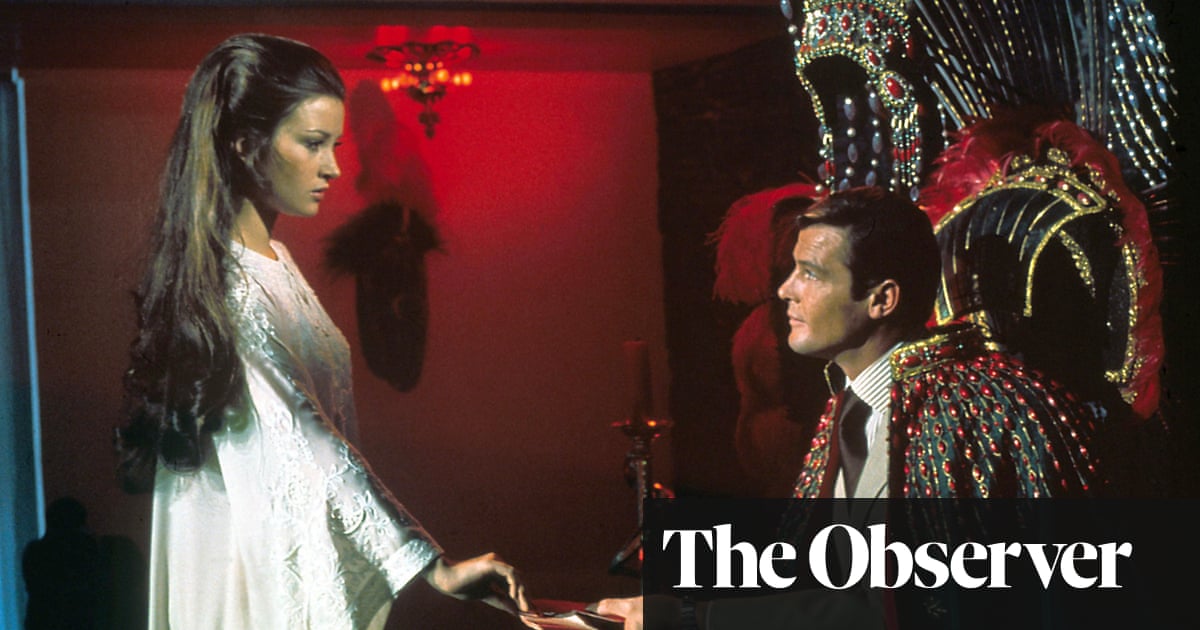
“We can’t see it,” says a character in The Matrix Resurrections, “but we’re all trapped inside these strange repeating loops.” Small surprise techno producer Marcel Dettmann was commissioned to write music for this latest film in the franchise. It’s a natural fit. Its director, Lana Wachowski, goes clubbing at Berghain, the Berlin techno club where Dettmann is resident and where, cut off from the everyday world, people have surreal, liberating experiences. Techno continues to inspire the franchise’s aesthetics.
When club techno arose in 1980s Detroit, African American producers were reimagining the deindustrialised city as a site of futurist fantasies. Cybotron’s dystopian 1984 track Techno City was inspired by Fritz Lang’s Metropolis and the Tokyo of Yellow Magic Orchestra’s track Technopolis. “I extrapolated the necessity of interfacing the spirituality of human beings into the cybernetic matrix,” said Cybotron’s Rik Davis (using the word “matrix” before the film existed), “between the brain, the soul and the mechanisms of cyberspace.”
It’s telling that The Matrix’s character names (Neo, Trinity, Morpheus) all sound like the monikers of techno producers (Function, DVS1, Cadency). Similarly, the fashion in the film is not unlike stereotypical Berlin techno clubwear. “When they go into the Matrix, they create their persona, which is how they see themselves,” said Matrix costume designer Kym Barrett of the characters, with their PVC coats, heavy boots and micro sunglasses (by Richard Walker).
Techno artist Jeff Mills similarly speaks of shedding his human form through music. “I’m becoming the third person,” he told the Wire, comparing his productions to robot probes of alien territories. Along with Mike Banks, Mills was co-founder of the Detroit techno collective Underground Resistance (UR). UR sought to harness techno’s power of anonymity to de-programme people from what they called the “dominant mindbeam”: the false reality by which, through mass media, we’re conditioned to accept an untrue sense of who we are. “Everything you see may not be real,” UR sang on their 1998 album Interstellar Fugitives. “It might be a mirage.”
The Matrix is also based on such a distinction between the apparent world and the real world. Co-creator Lilly Wachowski recently revealed that, in the original screenplay, Switch was supposed to be a trans character who in the matrix was a woman and in the real world a man. Many trans and queer people experience this truth in underground party scenes, where the techno club is a safe environment to explore who they really are.
The Matrix Reloaded’s most striking sequence occurs at a subterranean rave in Zion. In a cavernous space lit by naked flames, hundreds of sweating bodies dance to a techno track (Fluke’s Zion) mimed by drummers. The fashion is muted-tone tunics with bald heads, beaded wrists and swinging dreadlocks. That scene invokes the exhilarating sense of freedom one feels at an underground club night, when the everyday world vanishes. It shows The Matrix’s kinship with techno’s strange marriage of the futuristic and the ancient.
Why techno? At its best, it is synthetic electronic music without any familiar features – no melody, no harmony, no song structure – relayed in dark featureless spaces. This means it can give a momentary release from history and identity, including race, gender and sexual constructs. In Berlin, through clubs such as Berghain and promoters such as Gegen, techno is allied in an empowering way to queer countercultural movements. “Leave your digital surveillance device at home (or in the coat check),” said the blurb for a recent Gegen party. “Destroy your self-image.”
French theorist Jean Baudrillard’s Simulacra and Simulation was one of three books the Wachowskis told Keanu Reeves to read before shooting The Matrix. “There is no more fiction,” it quips. “[Science] fiction will never again be a mirror held toward the future, but a desperate rehallucination of the past.” In this view, movies such as The Matrix Resurrections are vain attempts to rehash traditional grounding myths for our quickly dissolving world.
But I think that’s too pessimistic. The term Gilles Deleuze uses for some post-realist cinema is “fabulation”. Blockbuster pyrotechnics notwithstanding, The Matrix is a cinematic fabulation, tapping into our deep, hard-to-shake-off sense of modern life’s unrealness, and inventing new identities. Our postindustrial environment – work, cities, social media, interiors, race, gender – can feel like a collective dream from which we yearn to be shocked awake. For many, techno clubs have that power. “A world without rules and controls, without borders or boundaries,” in Neo’s words. “A world where anything is possible.”
It makes me think of my friend’s first night at Berghain, the clandestine power station turned techno club. At the first-floor bar, a woman asked him if he’d like some psilocybin mushrooms; he nodded and she said to follow her. As they walked along the back of the strobe-lit dancefloor, surrounded by dancing leather-clad bodies, he noticed the tattoo on her back shoulder: a white rabbit. Life imitating art – it was just like the scene from The Matrix precipitating Thomas Anderson’s transformation into Neo and his entering a new, weirder reality.












